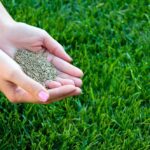So, you’ve decided to grow vegetables and herbs at home.
Building a greenhouse in your backyard provides the perfect environment for plants to grow year-round. You can even use the greenhouse to get a jump start on the growing season with vegetables like peppers and tomatoes. Plant them early in the greenhouse, and move them in the garden when the temperatures are warm enough to provide an environment propitious for growing.
Having a greenhouse is a wonderful idea for everyone who loves plants. Before installing one, here are some pieces of information you need to know.
The location

If you have enough space in the back of the house, place the greenhouse there because the closer to you it’s, the more likely you are to use it. The location needs to have access to water and electricity because you’ll need both to grow plants.
Choose a spot with maximum exposure to the sun. The best location is the one that gets over 6 hours a day of sunlight, during the cold season. If your backyard doesn’t get the needed sunlight, you can use grow lights to compensate for the lack of warmth and light.
When the location is exposed to the bright sun the entire day, you need to plant deciduous trees to provide shade for your vegetables. Shelterlogic states that you can install greenhouses on all surfaces, but they need adequate drainage. It’s recommended to install a layer of landscape cloth over the piece of land you want to use, to keep the weeds out.
Environmental control

Heating
Insulate the greenhouse if you live in an area with a cold climate because vegetables need plenty of warmth to grow healthily. Even if during the day the greenhouse gets plenty of light, during the night it can cool off fast if uninsulated. Some solutions are a circuit electric heater, gas or oil heaters, solar heater or radiant heat lamps. By placing barrels and rocks inside the greenhouse you keep the heat inside.
Shading
Shading is essential for greenhouses installed in warmer climates because sun lights can burn plants. Shade cloths are effective solutions to reduce the amount of sunlight the plants get daily. Sometimes even deciduous trees are a great alternative, but their location towards the greenhouse is crucial because when placed too close they create too much shade.
Pests
The first step to keep pests away is to keep your gardening tools clean. The second one is to ensure that all the plants you bring in the greenhouse are healthy and bug-free. When growing the plants from seeds inside the greenhouse, they can get sick with no reason, so you need to remove the diseased ones or the ones with bugs.
You can also spray them with insect-killing substances, but ensure they are eco-friendly. And last but not least, you need some good bugs in the greenhouse to eat the bads, and help your vegetables grow.
Spider mite predators, whitefly parasites, green lacewings and ladybugs are essential in every greenhouse.
These are the basic pieces of knowledge every homeowner needs to know before installing a greenhouse.






